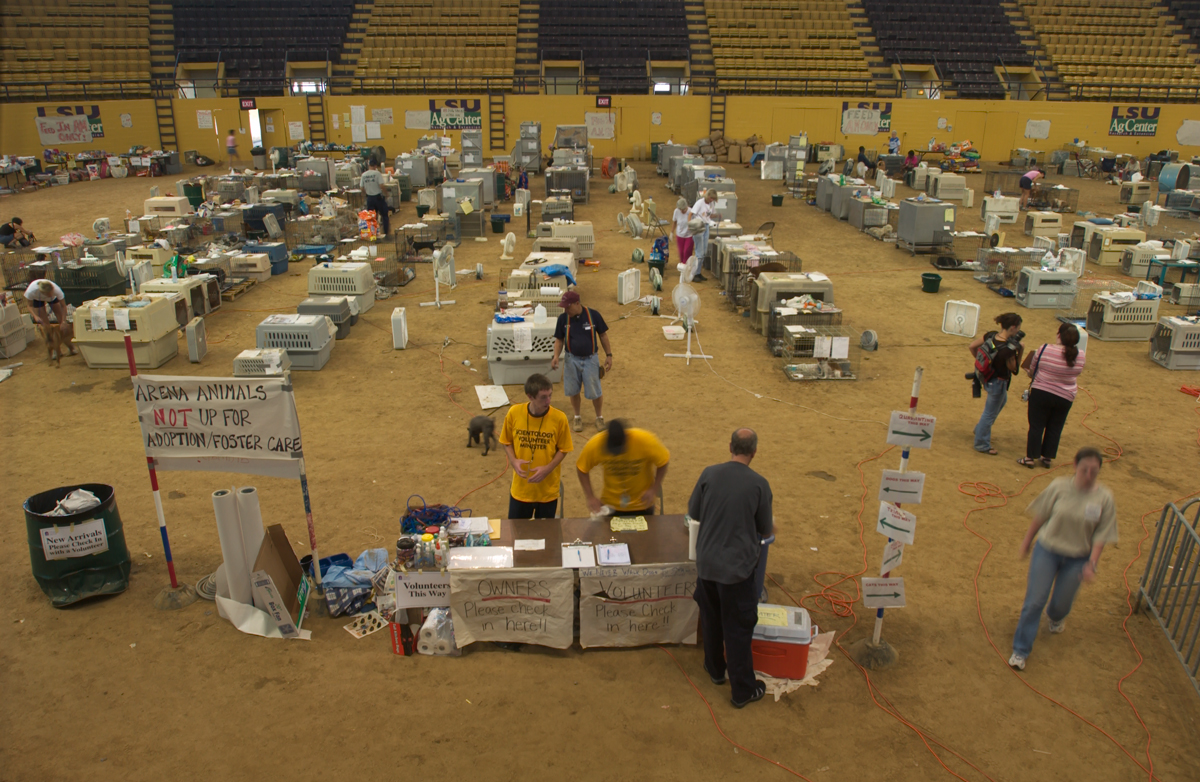Katrina at 20
20 heroic tales of people helping animals
as told to Sandra Sarr, LSU Vet Med strategic communications
Renée Poirrier, DVM (LSU 1988), director, Louisiana Animal Response Team, Acadiana Veterinary Clinic owner

The arena floor of the temporary animal shelter on the LSU campus at the LSU AgCener's John M. Parker Coliseum.
“I became the volunteer director of the Louisiana State Animal Response Team in 2003. I wanted some way to give back to my community and my profession. I got my first opportunity in 2005 when Katrina hit. Two things still stand out all these years later. The willingness of people from all over the country to drop everything and come to help and the willingness of our veterinary community to step up to help.
LSU Vet Med set up the call center for large animal owners to get help and sent veterinarians, staff and students to help manage the Baton Rouge pet shelter, the largest co-located pet shelter in the state. The LSU Vet Med veterinarians managed the large animal shelter at Lamar Dixon, as well. Towards the end of the small animal search and rescue at the Lamar Dixon rescue shelter, we asked local veterinarians to volunteer to assist. They came in to provide veterinary support for each rescue team on the last days of search and rescue. Thirty veterinarians came from all over Louisiana to go out with the small animal search and rescue teams.
Many things have changed since Katrina. In 2006, Louisiana passed a Pets Act and the federal government followed with the 2006 Pets Evacuation and Transportation Standards (PETS) Act, recognizing pets as members of society.
Animal Response is integrated as part of general emergency management. The National Animal Rescue and Sheltering Coalition (NARSC) and the National Alliance of State Animal and Agricultural Emergency Programs (NASAAEP) were formed to identify best practices and better coordinate resources for a response. Our Louisiana Department of Agriculture and Forestry now has incident management teams to manage state-run co-located pet shelters.
Many of our local animal control agencies are part of a statewide memorandum of understanding to assist during disasters. LSART has become a formal Medical Reserve Corps, and provides training for both human first responders as well as animal first responders.
All of this progress has been made because Katrina shined a spotlight on the strength of the human-animal bond and what happens when people and their animals are separated. A driving force for me was how I would want the pets and their people that I see in my veterinary practice taken care of during a disaster. Each disaster is different but learning the lessons from Katrina has made us stronger and better able to help people and animals before, during, and after disasters.”